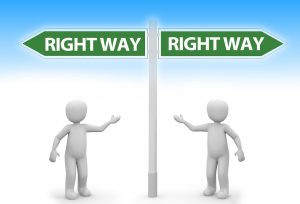 This is one of the main questions I hear in relationship counselling. It is not an easy one to answer at first. The reason for this is that each person’s style of communicating can be different from the other. When this is the truth, it needs to be recognized during the beginning of therapy and then addressed with the couple.
This is one of the main questions I hear in relationship counselling. It is not an easy one to answer at first. The reason for this is that each person’s style of communicating can be different from the other. When this is the truth, it needs to be recognized during the beginning of therapy and then addressed with the couple.
If one person has a passive style, it means this person will not be direct with what they really think or how they feel. Their behavior may be incongruent with what they are saying to their partner and this can lead to confusion within the couple.
If the other person is aggressive, they may show frustration, be irritable, and could be verbally abusive. This person may have learned this style growing up and not know any other way to get their needs met. However, this style can and will erode a relationship. In addition, when met with this aggressive style, their partner could retreat, withdraw, and shut down.
I would eventually see this couple in my office. They would both be at their wits end and know that they cannot communicate effectively, but are stuck in old reinforced communication styles. There are power struggles, ongoing unresolved conflicts, silent treatments, and one-up-man ships behaviors because each wants the other to meet their “needs”. This couple can walk into my office at a stalemate in their relationship, both unhappy, worn out, and want their relationship to change.
When both walk in to see me…their communication style is the very first and most important subject to tackle in order to see changes.
*The views expressed by our authors are personal opinions and do not necessarily reflect the views of the CCPA





